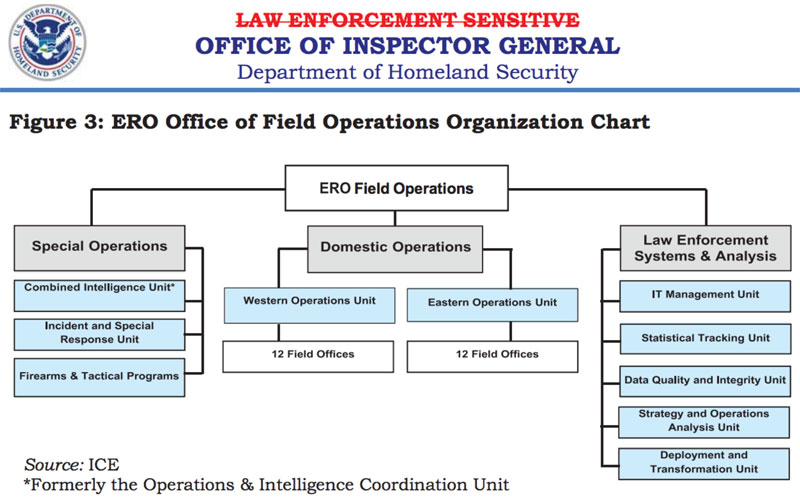
A new report by the Department of Homeland Security (DHS) Office of Inspector General (OIG) finds that U.S. Immigration and Customs Enforcement (ICE) continues to face significant challenges with its screening of aliens who may have ties to terrorism.
Auditors warn ICE may have missed opportunities to identify, apprehend, and adjudicate the status of aliens posing the highest risk to public safety and national security.

The report, “ICE Faces Challenges to Screen Aliens Who May Be Known or Suspected Terrorists (REDACTED),” concluded that ICE’s Enforcement and Removal Operations (ERO) faces significant limitations in implementing its Known or Suspected Terrorist Encounter Protocol (KSTEP).
ICE established KSTEP to streamline the screening protocol of all aliens and to coordinate and exchange information with other law enforcement and intelligence agencies.
Despite its implementation, the agency’s KSTEP policy fails to require continued screening of the majority of nearly 2.4 million aliens no longer in ICE custody but under ICE supervision.
(Hear from Immigration and Customs Enforcement chief Thomas D. Homan and other officials on immigration and border enforcement. Courtesy of the Washington Post and YouTube. Posted on Dec 5, 2017)
Auditors sampled 40 of 142 ERO case files of detained aliens identified as known or suspected terrorists during fiscal years 2013 through 2015.

They reviewed the cases to test ERO’s implementation of KSTEP and found instances of noncompliance in all 40 cases.
ERO failed to follow procedures from running initial checks to fully documenting its actions.
DHS OIG attributes some instances of noncompliance to limited program oversight and weak management controls.
Furthermore, auditors observed that some ERO offices do not have access to DHS classified networks which are imperative to communicate derogatory information related to known or suspected terrorists.
To collect pertinent information on known or suspected terrorists, ERO agents are forced to inconveniently travel to gain access, sometimes hours away.
Some ERO field offices do not any access, which limits and can jeopardize custody decisions.
(ICE Acting Director Thomas Homan on Congressman Luis Gutierrez slamming President Trump’s immigration policy and California’s sanctuary city laws. Courtesy of Fox Business and YouTube. Posted on Oct 10, 2017)
Additionally, some local law enforcement agencies declined to cooperate with ICE, preventing Homeland Security from screening other criminal aliens.
From January 2014 through May 2017, auditors determined that approximately 675 jurisdictions nationwide declined to honor more than 29,000 ICE immigration detainers.
Released aliens may put the public and ERO personnel at-risk and more resources are required to bring these individuals into ICE custody.
(Learn More about the Mission of ICE ERO. Enforcement and Removal Operations (ERO) enforces the nation’s immigration laws in a fair and effective manner. It identifies and apprehends removable aliens, detains these individuals when necessary and removes illegal aliens from the U.S. This unit prioritizes the apprehension, arrest and removal of convicted criminals, those who pose a threat to national security, fugitives and recent border entrants. Individuals seeking asylum also work with ERO. Courtesy of ICE and YouTube)
DHS OIG made four recommendations to help ICE improve its oversight and internal controls including:
- ICE should expand the KSTEP scope requiring periodic screening of aliens under supervision
- Ensure all ERO offices have the necessary infrastructure to communicate
- Institute a resource assessment to allocate resources and determine number of officers needed, and
- Strengthen its quality control program by defining clear oversight responsibilities within ERO. ICE concurred with all four recommendations.
In response U.S. Immigration and Customs Enforcement (ICE) concurred with all recommendations and provided some plans to address the findings.
“Mitigating and reducing any vulnerability is vital to our nation’s security,” said Acting Inspector General John Kelly.
“We are pleased with ICE’s response to heed our findings by initiating the process to implement all recommendations.”
For more information visit www.oig.dhs.gov.
















